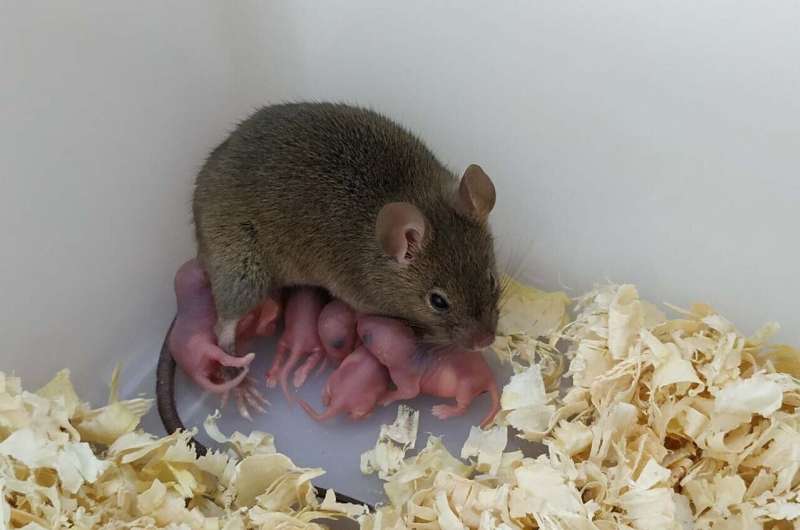March 8, 2022 report
Mammalian offspring derived from a single unfertilized egg

A team of researchers affiliated with several institutions in China and one in the U.S. has successfully derived offspring from a single unfertilized mammalian egg—in a mouse. In their paper published in Proceedings of the National Academy of Sciences, the group describes their technique when tested in mice.
Parthenogenesis is the development of embryos from a single unfertilized egg. In nature, it occurs in aphids, fish, reptiles, scorpions, mites and some bees—but not in mammals. In mammals, sexual reproduction involves a fusion of male DNA with female DNA, with the resulting offspring having genetic material from both parents. Prior research has shown that most of the cells in mammals express copies of genes from both parents—but a few do not, instead expressing genes from only the mother or the father. In their work, the researchers took advantage of such exceptions.
Prior research efforts aimed at forcing parthenogenesis in mammals have failed, the researchers note, due to genomic imprinting. They overcame this problem by taking a different approach. Their work involved removing an egg from a mouse and then using CRISPR to edit its genes to mimic the genes a male parent would have contributed during normal fertilization. They then injected an enzyme into the egg to switch on some genes and switch others off to make the genes in the egg resemble those of an egg that has been fertilized by a father. The egg was then implanted into the female's uterus, where it was allowed to grow into a fetus. The researchers repeated this process with several eggs, implanting them all together into a single mouse uterus—mice typically give birth to between eight and 12 pups at a time. All of the pups survived the birth, but only one of them survived to adulthood—and it did well enough to produce offspring as well.
The researchers suggest that parthenogenesis in mammals is achievable, though they acknowledge much more work is required before it can be used in real-world applications. They further suggest refinement of the process could lead to applications in agriculture or medicine development.
More information: Yanchang Wei et al, Viable offspring derived from single unfertilized mammalian oocytes, Proceedings of the National Academy of Sciences (2022). DOI: 10.1073/pnas.2115248119
Journal information: Proceedings of the National Academy of Sciences
© 2022 Science X Network




















